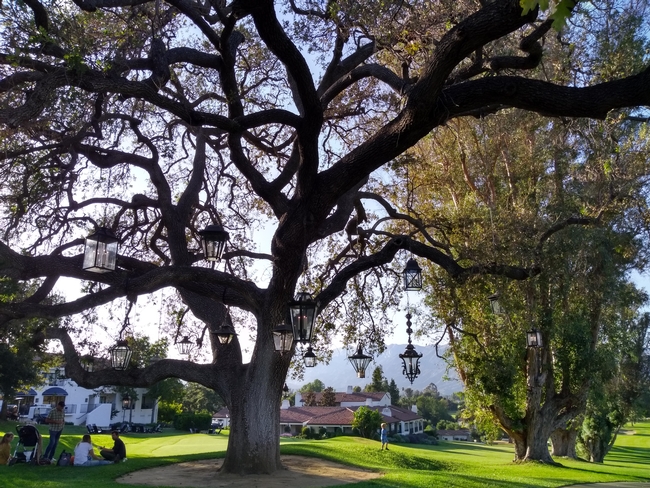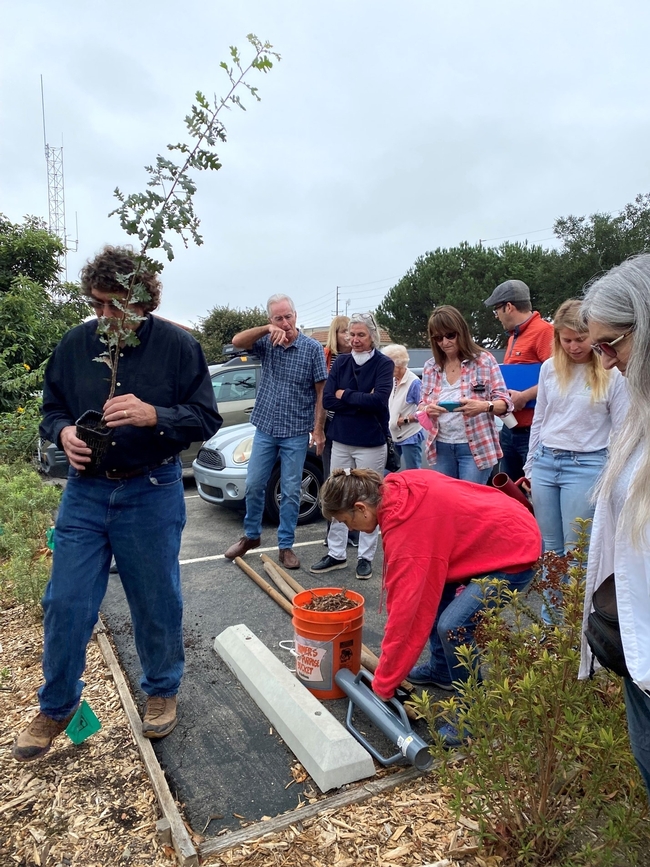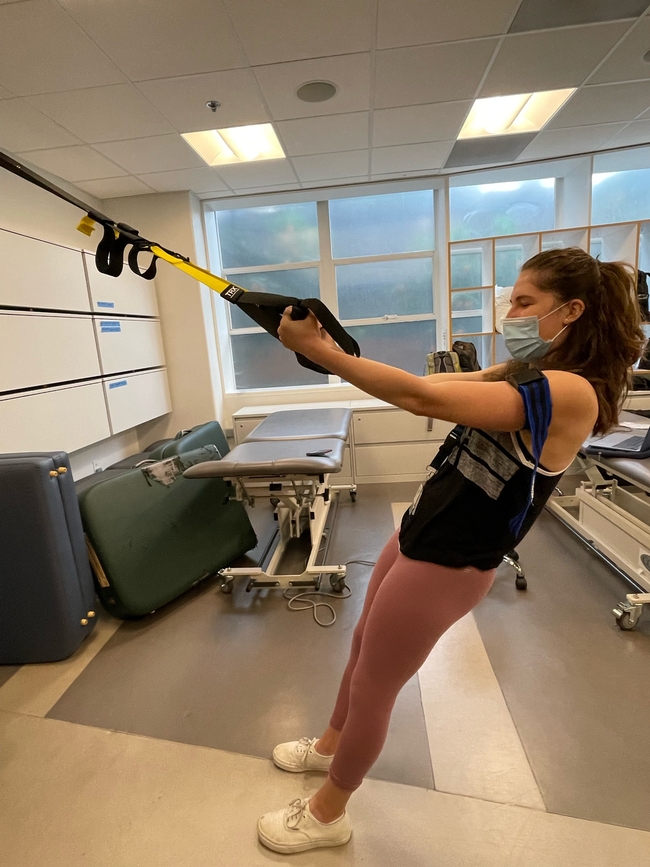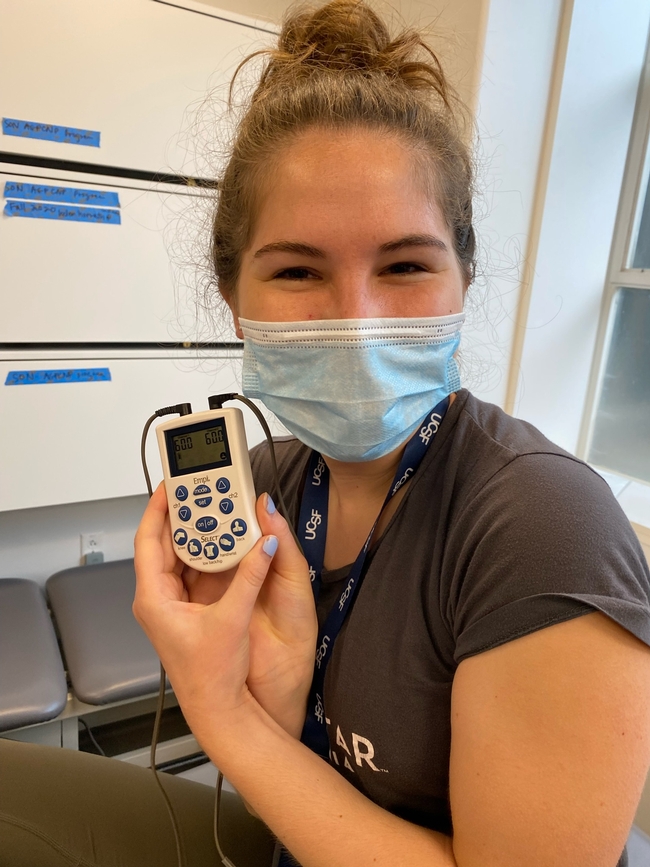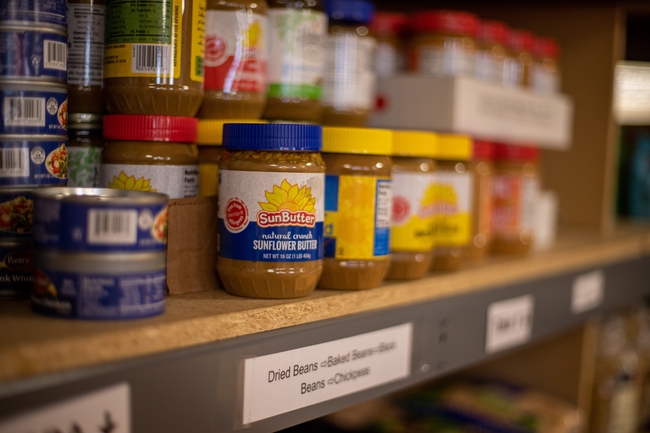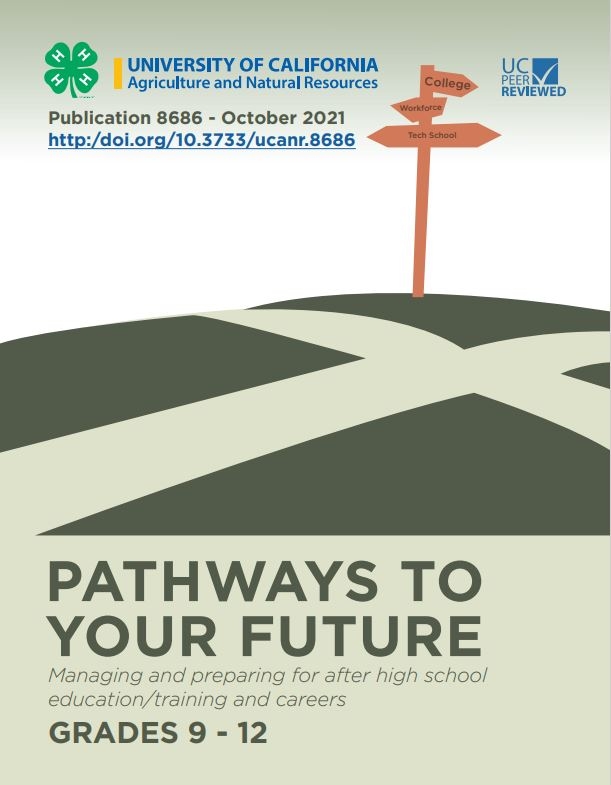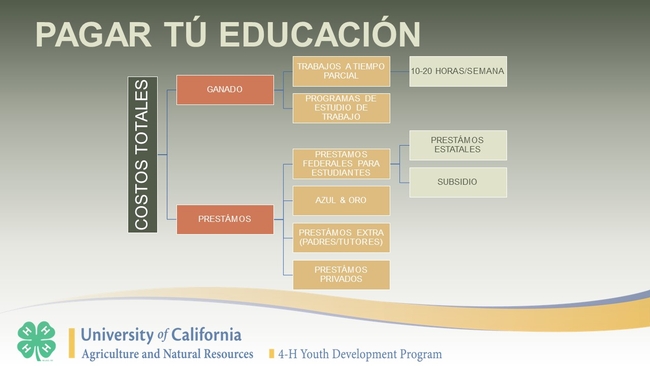Posts Tagged: university
Webinars explore role of trees in climate change resilience, May 14-16
A free webinar series titled “Trees to the Rescue: Solutions for Climate Change” will be held on May 14-16, from 4 p.m. to 5:30 p.m. each day. The webinars are sponsored by the University of California Thelma Hansen Fund.
“The webinars aim to increase our understanding of the role of trees in mitigating and adapting to climate change, how to plant the right trees and keep them healthy in urban environments, and the challenges of increasing the number of trees at the local level,” said Annemiek Schilder, director of Hansen Agricultural Research and Extension Center, who is organizing the series. Hansen REC is operated by UC Agriculture and Natural Resources.
Participants will discuss some of the challenges and pitfalls of reforestation, urban greening and tree equity. They will also provide diverse perspectives on tree planting and maintenance efforts and policy at the local level.
“Anyone interested in learning about the importance of trees in urban environments and climate resilience, as well as tree retention in the landscape should join us,” she said.
The agenda for each 90-minute webinar is listed below. To register, visit https://bit.ly/HansenTreesWebinar.
Tuesday, May 14: Trees as a Tool for Climate Change Mitigation and Resilience
4 p.m. Welcome—Annemiek Schilder, Director of Hansen Agricultural Research and Extension Center
4:05 p.m. Opening Remarks—Matt LaVere, Ventura County Supervisor District 1
4:10 p.m. Improving Outcomes of Tree Growing and Forest Restoration Efforts—Karen Holl, Professor of Environmental Studies, UC Santa Cruz
4:50 p.m. Climate Resilience through Urban Greening—Edith de Guzman, UC Cooperative Extension Specialist, Water Equity and Adaptation Policy, UCLA
5:30 p.m. Closing—Annemiek Schilder
Wednesday, May 15: Optimizing Tree Survival in a Changing Climate
4 p.m. Welcome—Emma Volk, Production Horticulture Advisor, UCCE Ventura and Santa Barbara counties
4:05 p.m. Cooling Urban Heat Islands with Climate-Resilient Trees—Janet Hartin, Environmental Horticulture Advisor, UCCE Los Angeles and San Bernardino counties
4:30 p.m. Keeping Trees Healthy from Sapling to Maturity—James Downer, Environmental Horticulture and Plant Pathology Advisor Emeritus, UCCE Ventura County
5:05 p.m. Dealing with the Inevitable Threat of Exotic and Invasive Pests—John Kabashima, Environmental Horticulture Advisor Emeritus, UCCE Orange County
5:30 p.m. Closing—Emma Volk
Thursday, May 16: Tree Advocacy and Planning at the Local Level
4 p.m. Welcome—Julie Clark, Natural Resources Community Education Specialist, UCCE Ventura County
4:05 p.m. Native Tree Restoration with Partners and the Public—Joey Algiers, Restoration Ecologist, Santa Monica Mountains National Recreation Area
4:30 p.m. Panel Discussion (Joey Algiers, moderator):
- Joey Algiers, Santa Monica Mountains National Recreation Area
- Mireille Vargas, County of Ventura Sustainability Division
- Mikaela Randolph, Green Schoolyards America
- Jan Scow, Registered Consulting Arborist, Ojai Valley
- Max Young, Ventura Regional Fire Safe Council
5:30 p.m. Closing—Julie Clark
Food pantries, improved CalFresh processes alleviate food insecurity on UC campuses
Nutrition Policy Institute researchers contribute to studies that inform policy changes
Marcela Gonzalez, who had wanted to be a physical therapist since she was a teenager, was in the final stage of realizing her dream.
But when she started in the PT program at the University of California San Francisco in 2021, a vexing struggle of her undergraduate years came back. Academic pressures and stomach troubles, compounded by financial worries, drained her of any energy and capacity to feed herself.
“I didn't eat; I lost a lot of weight because I just couldn't eat,” Gonzalez recalled. “I was too stressed out all the time; I was a mess.”
During her first year at UCSF, Gonzalez, for whom food has “always just been hard,” discovered that she qualified for CalFresh (California's version of the Supplemental Nutrition Assistance Program, formerly known as “food stamps”). Her participation in the program – as well as the presence of a campus food pantry – helped lift a heavy mental burden and allowed her to refocus on school.
To understand the mechanisms that connect eligible students with CalFresh benefits, which could greatly improve their lives and education, University of California researchers interviewed UC campus staff responsible for guiding undergraduate and graduate students through the application process. Their recently published study, which involved researchers at UC Agriculture and Natural Resources' Nutrition Policy Institute, illuminated several major facilitators and barriers to CalFresh enrollment.
Campus-county coordination, boosting staffing key factors
Ensuring that college students have access to CalFresh is especially crucial, given that food insecurity affects that segment of the population roughly four times the rate of the general population, according to the study's principal investigator and co-author Suzanna Martinez, an associate professor in the department of epidemiology and biostatistics at UCSF.
It's estimated that more than 40% of college students face uncertain access to healthy food – and inflation, the rising cost of attending college and increasingly unaffordable housing are likely to swell those numbers.
That's why researchers say it's critical for campus staff who work on CalFresh outreach to collaborate with the financial aid office and the county office that administers the CalFresh program locally. Through close coordination, staff members can determine if students meet the necessary exemptions and help them with the paperwork.
“When that happens, it's much easier than when a student applies without their campus Basic Needs coordinator, or when they just go to the county and apply on their own,” Martinez explained. “Maybe they don't know all of the verification documents that have to be included, or they might not know their financial aid status.”
Erin Esaryk, NPI research data analyst and first author of the study published in the Journal of Nutrition Education and Behavior, also highlighted the need for increased campus staffing to help with CalFresh enrollment, as well as more outreach by campus and county staff to student populations about the benefits.
“When there's a lot of outreach, that helps alleviate some of the stigma, to normalize the receiving of CalFresh,” Esaryk said.
Helping others worry less about food
Given her own history of travails, Gonzalez, the physical therapy student, wanted to help others at UCSF “de-stress” about food. In summer and fall 2021, she served as a “CalFresh ambassador” for her cohort of new PT students, developing presentations and guides that break down how to apply for or renew CalFresh benefits.
She became the go-to person for her classmates' questions on the logistics and details of applying for the program, and also encouraged fellow health-professional students who, like herself, did not think they would qualify.
“To take out less loans, or to not worry about food a little bit every week, is a great thing,” said Gonzalez, pointing out that subtracting food costs allows students to shave down their loans.
After helping introduce her classmates to CalFresh, she transitioned to working at the food pantry at the Parnassus campus. In addition to setting up and distributing the items, Gonzalez also posts on Instagram and TikTok (@ucsf_basicneeds) to promote the “food market,” which attracts about 100 students and campus community members every Thursday afternoon.
“You never know what you're going to get, but there's so much really good, fresh produce,” she said.
Campus food pantries deliver health benefits
Researchers are also studying how campus food pantries affect students' overall health, including easing the challenges of anxiety, depression and sleep deprivation. Another recent study published in the Journal of Nutrition Education and Behavior analyzed health-survey responses of 1,855 undergraduate and graduate students at all 10 UC campuses – before and after access to a campus food pantry.
“What we found was that students reported improvements in their perceived health and sufficient sleep,” said UCSF's Martinez, the lead author. “We also found that they reported fewer depressive symptoms, compared to before having access to the food pantry.”
By 2019, all UC campuses had established food pantries, although nationwide only about 25% of four-year colleges have one. The significant health benefits reported by UC students in this study give researchers hope that campus food pantries will see additional governmental support, in California and beyond.
“It was important to evaluate whether the food pantries were actually making a difference…if you don't have numbers or evidence, then you're not going to get funded to support future programming,” Martinez said.
Research guides state policy changes
Studies of food insecurity in the college setting have already informed policymaking aimed at smoothing the application process for CalFresh – benefits regarded by Martinez as a better long-term solution than food pantries, which constitute an emergency “short-term response” to the problem.
One example of the research's impact is a law passed last year in California that requires community colleges and California State University campuses to designate a campus-county liaison who would help students procure social services, including CalFresh. A separate law expanded the list of training programs within which students would potentially qualify for CalFresh, and another bill currently under consideration by the state Legislature would make the processing of students' CalFresh applications more consistent from county to county, through more standardized training of staff.
Meanwhile, on the research front, Esaryk, Martinez and their colleagues are completing a follow-up study on students and CalFresh enrollment, this time looking at the perspectives of county staff. And while their broader goal remains clarifying and streamlining student eligibility rules and processes at all levels, they remain focused on students and meeting their needs.
“Right now, our main mission is just to try to increase awareness of CalFresh for students and to let them know they may be eligible,” Martinez said, “and then assist them through that application process so they can actually get the benefits.”
In addition to Esaryk and Martinez, NPI director Lorrene Ritchie and Laurel Moffat of Washington State University are also authors of the CalFresh/SNAP benefits study, while co-authors of the college food pantry study are Ritchie, Gwen Chodur of UC Davis, Sevan Kaladijian of UC Irvine and Michael Grandner of the University of Arizona.
New publication helps youth evaluate post-high school ‘pathways’
Free downloadable curriculum recognizes diverse family circumstances
Not all young people are on an expressway to a four-year college, and a new publication from University of California Agriculture and Natural Resources acknowledges their many circumstances and possibilities. The “Pathways to Your Future” curriculum invites high school-aged youth – and their families – to map their unique situations and passions before embarking on their own road.
Whereas similar guides might convey advice on a one-way street, this free download outlines a “hands-on” experience – in school settings or out-of-school programs – to help young people steer toward their best post-high-school education, training and career options.
“We wanted to make a youth-centered publication,” said co-author Claudia Diaz Carrasco, UC Cooperative Extension 4-H youth development advisor in Riverside and San Bernardino counties. “A lot of the content out there is based on delivering content to kids – just like information on college and careers; with ‘Pathways to Your Future', it's actually a skill-building curriculum so that youth are doing research and having critical discussions and making comparisons.”
In a pilot program that engaged 228 high schoolers across California (primarily 9th graders recruited from local 4-H programs), many participants said they appreciated that the curriculum presented a variety of pathways, including vocational education, non-degree certificate programs, community college, on-the-job training or entering the workforce – as well as four-year institutions of higher education.
“They have been liking that it doesn't start with ‘pick a college and get there,'” Diaz Carrasco said. “But really it's a self-reflection approach, where they start going back to what they're passionate about and what they think they're good at – and how much money they want to make in the future – and really just having that opportunity to know themselves before jumping into college or a career.”
To help them attain that clear-eyed perspective, the modules in the curriculum also debunk myths about the college experience and incorporate budgeting activities.
“This program gives youth the opportunity to constantly reflect on their learning as they get more data,” said another publication co-author, Lynn Schmitt-McQuitty, UC ANR's statewide 4-H director. “In the beginning, youth may have a very rigid or glamorized view of their future; the ‘Pathways' program grounds things and brings reality into the picture.”
Parents of the pilot-program participants – who predominantly identify as Latino – were also thankful for opportunities to engage in “real talk” with other parents about the wide array of options. Acknowledging the diversity of families across California, “Pathways to Your Future” also includes several sections in Spanish to make essential information more accessible.
“The parents need as much – or more – education on the processes, opportunities and expectations to support post-high school life,” Schmitt-McQuitty explained.
In addition to integrating families into discussions about their future, the curriculum also provides spaces for the high schoolers to participate in panel discussions with their slightly older peers, who recently went through their own decision-making journeys.
“The youth really appreciate seeing someone like themselves talking about what they went through, how they overcame obstacles,” said Diaz Carrasco. “They feel really inspired that there is a pathway for themselves.”
For assistance and support in bringing the “Pathways” curriculum to your community, contact your county's Cooperative Extension office, reach out to the local 4-H program, or email Claudia Diaz Carrasco at cpdiaz@ucanr.edu.
The other authors of the publication are Shannon Horrillo (College of Agriculture, Biotechnology, and Natural Resources, University of Nevada, Reno Extension), Darlene McIntyre and Nathaniel Caeton (UC ANR), and Martin Smith (University of California, Davis).
Exercise could be the antidote to aging that Americans seek
There's something magical about exercise. It impacts the body in many different ways, and all of them are good.
Exercise burns calories, improves cardiovascular health, tones muscles, boosts mood, and now scientists are learning that it also thwarts one of the most-feared symptoms of aging, memory loss.
Researchers at UC Irvine are conducting a 15-site national study on the effects of aerobic exercise on adults with mild memory problems. They are hoping to document evidence that will allow physicians to write prescriptions for exercise.
“Exercise is medicine,” said James Hicks, director of UC Irvine's Center for Exercise Medicine and Sport Sciences.
To date, no effective drug therapies to treat dementia have been found.
“Since 2002, 420 clinical trials on drugs targeted for Alzheimer's have been launched. All of them failed,” Hicks said. “No drug will change its trajectory. But physical activity might.”
Another UC Irvine professor, Carl Cotman, agrees.
“That concept has exploded. That's where the future is: understanding how exercise alters disease trajectories and improves outcomes,” Cotman said.
Cotman's research showed that exercise increases production of a substance called brain-derived neurotrophic factor, which aides in learning and memory and facilitates connections among nerve cells. It's so critical to brain function that it has been dubbed “Miracle-Gro for the brain.”
“Exercise builds brain health,” Cotman said. “It makes you more efficient. You're thinking cleaner. It introduces a state of readiness.”
UC ANR educators encourage Californians to exercise
While scientists study the impact of exercise at the molecular level, UC Agriculture and Natural Resources nutrition educators continue to emphasize the importance of physical activity when they teach youth and families ways to improve their lives with healthy eating and movement.
UC ANR's Expanded Food and Nutrition Education Program (EFNEP) is offered in 24 counties in California. It is administered by UC Cooperative Extension offices. EFNEP educators help limited-resource families gain the knowledge, skills, attitudes and behavior necessary to choose nutritionally sound diets and improve their well-being.
Families who participated in the program have said that it transformed their lives for the better. They have changed what their family eats, switched to low-fat milk instead of whole milk and have fruit for snacks. They eat more vegetables and fruit and thaw meat and poultry in the refrigerator. Some walk daily, others play games with their children. Almost all use store ads and unit pricing to get the best shopping deals.
CalFresh Healthy Living, University of California is another nutrition education program administered by UCCE. It helps children and adults choose a healthy lifestyle by encouraging good food habits and decision making skills. Adult nutrition education is provided at no cost to low-income families. The youth nutrition education program provides support and resources to preschool through high school teachers in low-income schools to deliver nutrition and physical activity education in their classrooms.
CalFresh Healthy Living, UC helps families find parks in their neighborhoods so they can stay active, and shows how they can join sports team and locate public pools. The training acknowledges that it can be difficult to add exercise to busy lives, and helps participants overcome the barriers.
The Physical Activity Guidelines for Americans recommend:
- 2.5 hours of moderate physical activity per week, or 30 minutes five times per week
- Strength and resistance training two times per week
- Flexibility exercises two to three times per week
“Perhaps the most common barrier is a lack of time,” said CalFresh Healthy Living, UC nutrition program coordinator Austin Cantrell. “In order to implement an exercise routine into our lives, many of us will need to plan out our day and see where we can fit exercise into our schedule.”
An important thing to remember, Cantrell said, is that exercise doesn't have to happen all at once.
“If you exercise for 10 minutes three times throughout your day, you will have met your 30-minute requirement,” he said. “If we exercise for 10 minutes before we go to work, take a 10-minute walking break while at work and exercise for 10 minutes after work, we will meet our recommended amount of physical activity for the day.”
A way to save time is engaging in vigorous physical activity, which cuts exercise time recommendation to 75 minutes a week. How can you tell the difference between “moderate” physical activity and “vigorous” physical activity? Examples of moderate activity are walking or gardening. Vigorous physical activity includes running, sprinting or swimming.
“Typically, you will be able to hold a conversation during moderate activity, but will be unable to sing,” Cantrell said. “During vigorous activity, you will not be able to have a conversation without considerable shortness of breath or pausing.”
Some people feel more motivated to be physically active by combining it with activities they enjoy.
“Spend time with your children playing outdoors or playing sports,” Cantrell suggests. “Seek social support by joining walking clubs or recreational sports leagues.”
Sources:
Should doctors write prescriptions for exercise? By Shari Roan, UC Irvine
Overcoming barriers to exercise By Austin Cantrell, CalFresh Healthy Living, UC
UC studies cost of producing peppermint oil, almonds, walnuts, mandarins, winegrapes
New studies showing production costs for almonds, walnuts, mandarins, winegrapes and peppermint oil are now available from the University of California Cooperative Extension.
Each analysis is based upon hypothetical farm operations using practices common in the region. Input and reviews were provided by UC Cooperative Extension farm advisors, UC researchers, growers, farm accountants, pest control advisers, consultants and other agricultural associates.
Each study describes the assumptions used to identify current costs for the individual crops, material inputs, cash and non-cash overhead. A ranging analysis table shows profits over a range of prices and yields. Other tables show the monthly cash costs, the costs and returns per acre, hourly equipment costs, and the whole farm annual equipment, investment and business overhead costs.
The new studies are as follows:
- Sample Costs to Establish an Orchard and Produce Almonds, 2012, Sacramento Valley, by Joseph H. Connell, William H. Krueger, Richard P. Buchner, Franz Niederholzer, Carolyn J. DeBuse, Karen M. Klonsky and Richard L. De Moura.
- Sample Costs to Establish a Walnut Orchard and Produce Walnuts, 2012, Sacramento Valley, by William H. Krueger, Richard P. Buchner, Janine K. Hasey, Joseph H. Connell, Carolyn DeBuse, Karen M. Klonsky and Richard L. De Moura.
- Sample Costs to Establish a Citrus Orchard and Produce Mandarins (Tango), 2011, San Joaquin Valley – South by Neil V. O’Connell, Craig E. Kallsen, Karen M. Klonsky, Richard L. De Moura and Kabir P. Tumber.
- Sample Costs to Establish a Vineyard and Produce Winegrapes (Cabernet Sauvignon), 2012, North Coast Region (Napa) by Monica L. Cooper, Karen M. Klonsky and Richard L. De Moura.
- Sample Costs to Establish a Peppermint Stand and Produce Peppermint Oil, 2011, Intermountain Region, by Rob Wilson, Daniel B. Marcum, Karen M. Klonsky and Richard L. De Moura.
All cost of production studies are available online at http://coststudies.ucdavis.edu, at UC Cooperative Extension offices or by calling (530) 752-3589. For more information about the studies, contact Richard De Moura at rdemoura@ucdavis.edu in the Department of Agricultural and Resource Economics at UC Davis.

